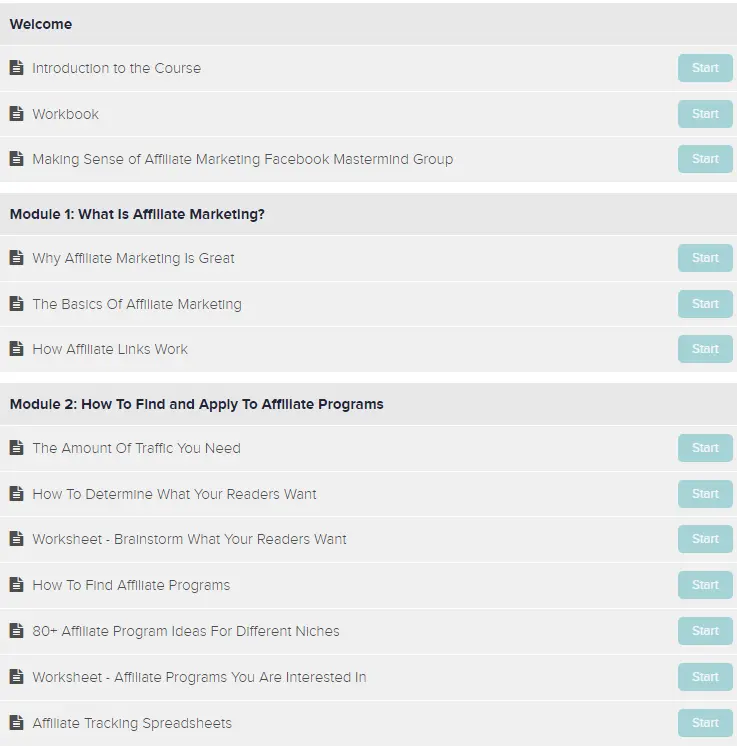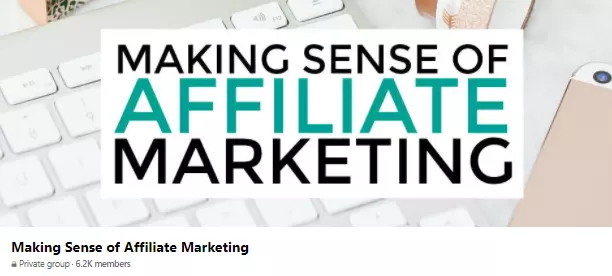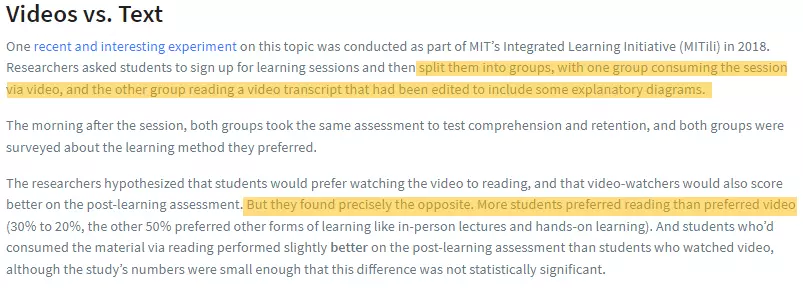
Welcome to my Making Sense of Affiliate Marketing review.
In case you don't know, this course was created by the very successful blogger Michelle Schroeder-Gardner who runs the blog Making Sense of Cents.
Is her course worth the money or should you take a pass?
I have reviewed a lot of affiliate marketing courses over the years and can spot the good from the bad.
So how does Making Sense of Affiliate Marketing stack up? Why should you take my word for it?
I bought the course and spent 7 hours going through it. It didn't take long because it's not an overly long course.
In this review I'll let you know:
Let's get into this!
Who is Michelle Schroeder-Gardner?
Michelle Schroeder-Gardner is a blogger, online freelancer, solopreneur, and entrepreneur. She is the founder of Making Sense of Cents, a personal finance blog that has been featured in publications such as Forbes and US News & World Report.
Michelle has also been named one of the top money bloggers in the world. In addition to her work as a blogger, Michelle is also an online course instructor. Along with Making Sense of Affiliate Marketing, she also sells her Making Sense of Sponsored Posts course.
Michelle and her husband come from the USA and currently live and travel on their sailboat.

What is Making Sense of Affiliate Marketing?
Making Sense of Affiliate Marketing is a course created by Michelle Schroeder-Gardner. It is an online course that teaches you how to make money through affiliate marketing with your blog.
Straight from the sales page - I guess this could be the mission statement?

Her course is quite popular.
She's sold over 5000 copies of her course since it launched back in July of 2016. But more impressively, that translates to over $1,000,000 in sales.
She even wrote a blog post about it on her blog:

What is the cost of Making Sense of Affiliate Marketing?
Making Sense of Affiliate Marketing costs $197 which is a one-time payment.
You also have a payment plan option for 2 payments of $105 a month.

The payment plan will cost you just $13 more. I do applaud Michelle for not gouging her students on the payment plan. Many other course creators have ridiculous payment plans that end up costing much more than the one-time payment.
Refund Policy
There is a 30 refund guarantee with this product but it comes with a catch.
You must prove you went through the material and took action. Not sure how you are going to prove that but if you're going to request a refund I am sure you can come up with something creative.
How is the Course Set up?
Making Sense of Affiliate Marketing has a total of 6 modules. There are 30+ lessons in the course. Included are worksheets, bonuses, and access to the Facebook Group.
The delivery is text-based. There is no video instruction in this course.
The course curriculum is clearly displayed on the sales page. Here is a sample of the contents from modules 1-2.

The course is hosted on Teachable, which is one of the best platforms for online learning due to its clean and easy-to-read interface.
Who is Making Sense of Affiliate Marketing For?
The Making Sense of Affiliate Marketing course is for beginners to intermediate bloggers looking to make affiliate income. Even if you have just one blog post up, the course can help.
However, you must already have a functioning blog that is set up already.
Who is Making Sense of Affiliate Marketing NOT For?
Making Sense of Affiliate Marketing is not for aspiring affiliate marketers that don't yet have a blog set up.
The course does NOT teach you how to set up a blog. It assumes that you have already picked your niche, have your about/contact/privacy policy pages up, and have at least one blog post done.
It also does NOT teach you how to rank in the search engines with SEO. There is on-page or off-page SEO taught. I find this staggering considering this is how blogs get traffic - through organic, free traffic.
The course is labeled as being perfect for beginner bloggers, but some people might assume "beginner" means not even having a domain name picked.
It's also not for those that want to make money with affiliate marketing without having to start a blog. Money can be made through affiliate marketing in other ways such as:
If you don't want to create articles and wait for them to rank in Google, then there's no point to buy Making Sense of Affiliate Marketing.
What I Like about Making Sense of Affiliate Marketing (The Pros)
Here are some of the things I like about this course.
Active and Supportive Community
With your membership, you'll get automatic access to the Making Sense of Affiliate Marketing Private Facebook Group. It's a great place to hang out with likeminded affiliate marketers for quick tips and tricks. Michelle is also quite active in the group. Currently, there are 6,200 members.

While it is great to have a support system, you aren't going to find many "super affiliates" in this group.
People that join the course are mostly all newbies or big fans of Michelle's blog, hoping to emulate her success.
Do not expect much in this group. You'll no doubt get some help, but complex issues like how to rank in search engines with SEO or how to write content with satisfying search intent will likely not be answered here.
Step by Step Breakdown of Affiliate Marketing
If you're completely new to affiliate marketing, you'll have a pretty good understanding of how it works after getting this course.
Michelle shows you how to find affiliate programs to sign up to, how to sign up for them, how to find the right products for your niche, and how to drive conversions.
This information is pretty basic and you can easily find it online for free. However, Michelle does a pretty good job of explaining the perfect affiliate marketing strategy.
Michelle Teaches you to Work Smarter, Not Harder
A lot of new affiliate marketers will sign up for various programs and just slap links all over the place.
Michelle advises that you only add affiliate links to pages that are doing well. On those pages you should carefully select products to promote and don't over-do it with links. You should only list products that are related and products that your customer will find useful.
Focusing on pages that do well saves you time. However, there is no reason to not have affiliate links on pages that aren't doing as well. If the link fits, you might as well insert it.
White Hat, No Black Hat Tactics
Making Sense of Affiliate Marketing does not employ any unethical or black-hat strategies. Michelle keeps things clean so you're not going to get into trouble with Google or the law.
To give you an example, she says it's more important to promote a quality product over one that will make you more money.
If you promote a product that is low quality, this is going to reflect badly on your brand. So in short - do your research first on products that you promote. Check out reviews and see what people say about them.
Secondly, most people relate "White-Hat" to SEO. Since Michelle doesn't teach search engine optimization in this course, then you can't exactly get into trouble. I guess the saying no advice is good advice applies here.
Free, Lifetime Updates
With Making Sense of Affiliate Marketing, you get free, lifetime updates after purchasing the course. While some courses make you pay for updates, you won't have to with MSOAF.
However, since the inception of the course in 2016, it's been pretty dormant anyway. There have hardly been any updates that are even worthy to mention.
Practical Tips to Make Your Site Compliant
Nowadays there are certain things you must do to keep your site compliant. While Michelle is not a lawyer, she can help you with certain things like:
This section is mostly about legal rules and the necessary steps you need to take care of when venturing into affiliate marketing. However, it only applies to the United States. If you're from another country you'll need to look into your own laws around affiliate marketing.
Pinterest Module Has Some Great Strategies
In the bonus section, you get a Pinterest lesson from Lauren McManus from Create & Go.

I was pretty impressed by Lauren's instruction on how to get traffic with Pinterest. In case you don't know, a lot of traffic that Michelle's Making Sense of Cents site gets is directly from Pinterest.
Keep in mind you will be pitched Lauren's Pinterest course. I imagine this is the deal Michelle had with Lauren. Do some free training and I'll let you pitch your course. Fair enough.
Pinterest is fine as a secondary means of traffic and worth looking into. However, I would not focus on Pinterest traffic. It doesn't convert nearly as well as traffic from the search engines.
What I Don't Like About Making Sense of Affiliate Marketing (The Cons)
Here are the things that I didn't like about the Making Sense of Affiliate Marketing Course.
Very Basic Training
A lot of the training you'll find in the course is basic in nature. In fact, you could easily find the same information in a Youtube video by just searching for "affiliate marketing step by step".
I'm not new to affiliate marketing and I have learned quite a few strategies from the guys at Authority Hacker and Matt Diggity with their respective courses. (more on these later, lucky you!)
So I use my experience with affiliate marketing as a benchmark to gauge other courses. Since I didn't learn a single new thing from Making Sense of Affiliate Marketing, I can only surmise that the training is super basic.
Mostly All Text Training, Hardly any Video
Nowadays, most training for online courses is done through video. Making Sense of Affiliate Marketing is almost all taught with text.
I think this comes down to preference really, and some studies have shown that people prefer reading over video.

Source - Dataquest.io
So I guess this comes down to the individual. Personally, I prefer video. Maybe it's because most of the courses I've bought over the years are strictly taught with video and just find it easier to follow along.
No SEO Training
There is zero SEO training in Making Sense of Affiliate Marketing. I find this odd because in order for a blog to rank on Google, the SEO must be on point. If your on-page SEO is bad, such as having a title without the keywords, not having proper heading structure, not having keyword-rich, unique content, etc., then you're not going to rank.
This stuff is not taught in the course.
Then there's the off-page SEO. In order to rank for pages that are competitive, you aren't going to rank without links to those pages. Sure, you might get on page 2 or 3, but it will be impossible to rank on page one without authority, which you get through links.
Backlinking is not taught in the course either.
Michelle has even admitted she doesn't know much about SEO, so that's probably why she didn't have any SEO training.
Since she had a guest speaker for the Pinterest section, maybe she could have had a guest speaking for SEO? Just sayin'!
Not Recommended for New Bloggers
Making Sense of Affiliate Marketing is not recommended for new bloggers. Although this course is pitched to beginners, in reality, new bloggers will find little benefit.
Why is this?
As a new blogger, you might have your page up with very little information. There is a right way and a wrong way to set up your pages. For example, if you don't get your permalinks set up properly, you're going to have a weird URL that WordPress will default to.
This is just one example. There are many technical things to consider when setting up a new blog and this course does not teach any of it.
The course also assumes that even though you are new, you should already have traffic going to some of your pages.
Most new bloggers have zero to hardly any traffic when they start out. So when it comes to the lesson on "adding affiliate links to your high traffic pages", how are you supposed to do that if you have no traffic at all.
So in reality, the course falls short of expectations that a new blogger would have for an affiliate marketing course.
The Course Lacks Detail
Throughout the course, you are told to do certain things but never really shown how. For example, Michelle says you should grow your email list.
Very true. Every blogger should grow their email list. However, you aren't given the tools how to do this.
There are many steps involved in growing your email list on your blog from collecting emails in exchange for a free giveaway.
This is just one strategy and probably the most effective for bloggers but it is ignored.
Hidden Costs
You won't see any mention of additional costs you might incur as a member of Making Sense of Affiliate Marketing before signing up. However, once you're in, you'll be pitched a few products, all of which are affiliate links. (which is ok!).
One of those is Tailwind - which is a paid tool for Pinterest.
Another is Facebook Ads. Facebook ads can get VERY expensive. There is some training on Facebook by a 3rd party coach but again, this is an expense you're not made aware of before buying the course.
I mentioned earlier that Michelle tells you to grow your list. One of the tools she mentions is ConvertKit. She does not mention other options like GetResponse which I can personally vouch for because I use them. ConvertKit costs $29 a month for 1000 subs while GetResponse is only $15 for 1000.
It would be nice to have options but I am just going to assume ConvertKit is Michelle's preferred affiliate partner.
Can You Make Money With This Course?
I believe you can. But, you already need to have an existing blog that is generating some traffic. And, you currently have no affiliate marketing strategy whatsoever.
Affiliate marketing success comes with the right strategy and Michelle can show you some ways to monetize your blog.
However, if you don't have a blog or you aren't getting any traffic, you aren't going to make affiliate earnings with this course. To make money you need traffic, and this course falls short of teaching you the number one traffic that converts - and that's through SEO.
Are there coupon codes for Making Sense of Affiliate Marketing?
There are no known coupon codes for Making Sense of Affiliate Marketing. And yes, I even tried the "Honey" extension to see if I can find you a discount. No dice.
However, if you join Michelle's email list, she will sometimes have a Black Friday deal or something like that. Her readers will usually be made aware of any coupons she drops.
But you could be waiting for a long time.
Alternatives to Making Sense of Affiliate Marketing
These alternatives are for "true beginner bloggers" because they teach you how to build a blog from scratch. Even if you don't have a domain name yet.
Option #1 - The Authority Site System
This course comes from the guys at Authority Hacker. The training is perfect for beginners because they use a case study site that they build from scratch. You will see the entire process from registering a domain name, to getting hosting, setting up WordPress, doing keyword research, creating content, SEO, etc.
If you have never built a website or blog before, this course does all the hand holding and it's in video format. So you are able to see everything how it's done.
These guys also have a great reputation as they have sold many of their sites for 6 figures or more. So, you're learning from real pros.
I encourage you to check out the free training here. They could easily charge for this but you get it for free.
Option #2 - The Affiliate Lab
The Affiliate Lab was created by Matt Diggity, a very respected marketer. He owns several online companies and is very SEO-focused. He manages over 40 websites himself and his course is also geared towards beginners.
You'll also learn how to create a blog from scratch and learn all the steps in the process. With extensive SEO training, you'll learn how to capture free, organic traffic from Google and bank on any affiliate program.
Option #3 - Savage Affiliates
Savage Affiliates is taught by Franklin Hatchett, a very well-known Youtuber who also is one of the first to teach dropshipping. Savage Affiliates also teaches you to build a blog from scratch.
However, this course is a little bit lighter on the SEO side. You will learn other traffic strategies like paid traffic on Facebook and Google, traffic from Instagram, how to set up email campaigns, sales funnels, and more.
All three of these options are great for beginners that don't have an existing blog. Please look at my individual reviews for each to see which one works for you.
Conclusion and Final Thoughts
This concludes my Making Sense of Affiliate Marketing review. While I think this course can help an existing blogger to monetize his/her blog with affiliate products, it's just not a complete course.
There's no SEO training, it doesn't go into great detail, if you don't have a blog yet or just starting out, you won't get any instruction, etc.
To master affiliate marketing you need to have all the tools at your disposal. This course covers the main topics of affiliate marketing, but it just doesn't go deep enough and completely ignores some essential components to make a blog successful.
If you want to make money online and you want to do it with affiliate marketing, I'd suggest you take a look at the alternatives here before jumping into Making Sense of Affiliate Marketing.
Related Articles
- How I Make Faceless YouTube Channels With AI - April 9, 2024
- Top 21 Faceless YouTube Niches to Earn Big Profits in 2024 - April 3, 2024
- Dave Nick YouTube Automation Systems Review 2024 - March 28, 2024
